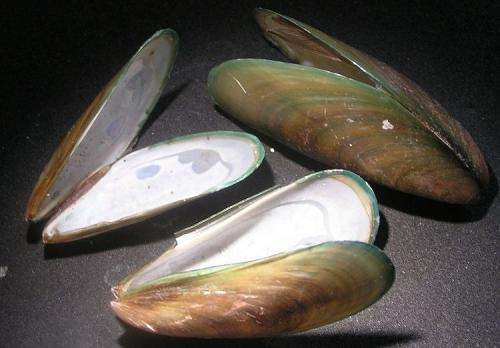May 16, 2017 report
New way to reduce skin scarring relies on a glue-like substance secreted by mussels

Bob Yirka
news contributor

(Â鶹ÒùÔº)—A team of researchers at Pohang University of Science and Technology in South Korea has developed a new skin application designed to reduce skin scarring due to injury. In their paper published in the journal Biomaterials, the group describes the glue-like substance they created and how well it worked on rats.
Scarring that occurs after accidents or surgical procedures can be both unsightly and uncomfortable, and for that reason, scientists have been looking into ways to prevent it from happening. Prior research has shown that scarring occurs due to an inability of the skin to weave collagen fibers in a scaffolding pattern over wide expanses in skin due to cuts or tears—bunches are created instead, resulting in scar material that is quite different from normal skin. One substance that has been shown to be effective to reduce scarring is decorin, a protein produced naturally by the skin. But thus far, it has proven difficult to synthesize it in the lab, and is therefore not commonly used. In this new effort, the researchers found a way to create a simpler version of decorin and have combined it with other ingredients to make a glue-like material that is able to fill in gaps in injured skin.
The glue-like material was made by mixing the simplified version of decorin with a molecule that binds with collagen and then made it sticky by mixing in a substance secreted by mussels. The result was a glue-like material that could be applied directly to a wound.
The researchers tested their glue by cutting the skin of several test rats and then applying it to the affected area—they then covered it with a clear plastic film. For comparison, they did the same with another group of rats, covering their wounds with the same plastic but without the glue. They then took pictures of the wounds and compared the results between the two groups. They report that by the 11th day, 99 percent of the wounds of the glue treated rats were closed, whereas only 78 percent of the untreated rats' wounds were closed. By the 28th day, all of the wounds in both groups of rats had healed, but the treated rats showed far less scarring than those that went untreated.
The researchers note that rat skin is different from human skin, so it is still not clear how well it might work in people—they plan to test their glue on pigs, which have skin much more like humans.
Written for you by our author —this article is the result of careful human work. We rely on readers like you to keep independent science journalism alive. If this reporting matters to you, please consider a (especially monthly). You'll get an ad-free account as a thank-you.
More information: Eun Young Jeon et al, Natural healing-inspired collagen-targeting surgical protein glue for accelerated scarless skin regeneration, Biomaterials (2017).
Abstract
Skin scarring after deep dermal injuries is a major clinical problem due to the current therapies limited to established scars with poor understanding of healing mechanisms. From investigation of aberrations within the extracellular matrix involved in pathophysiologic scarring, it was revealed that one of the main factors responsible for impaired healing is abnormal collagen reorganization. Here, inspired by the fundamental roles of decorin, a collagen-targeting proteoglycan, in collagen remodeling, we created a scar-preventive collagen-targeting glue consisting of a newly designed collagen-binding mussel adhesive protein and a specific glycosaminoglycan. The collagen-targeting glue specifically bound to type I collagen in a dose-dependent manner and regulated the rate and the degree of fibrillogenesis. In a rat skin excisional model, the collagen-targeting glue successfully accelerated initial wound regeneration as defined by effective reepithelialization, neovascularization, and rapid collagen synthesis. Moreover, the improved dermal collagen architecture was demonstrated by uniform size of collagen fibrils, their regular packing, and a restoration of healthy tissue component. Collectively, our natural healing-inspired collagen-targeting glue may be a promising therapeutic option for improving the healing rate with high-quality and effective scar inhibition.
Journal information: Biomaterials
© 2017 Â鶹ÒùÔº















